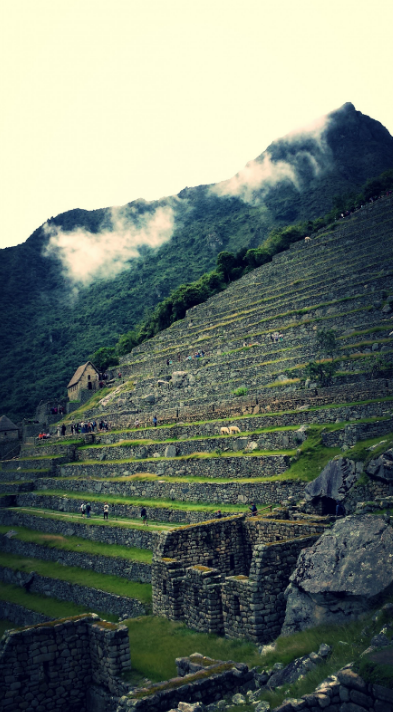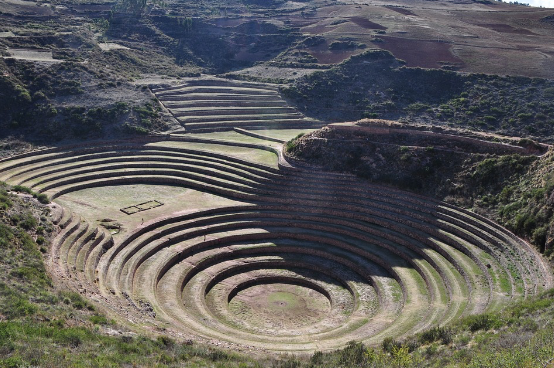Andes/South American Regional Bed Varieties: by Cameron Lee

Take an Agricultural Tour of the World with Gateway Greening! For the next few weeks, we’ll be posting a new blog post each Monday highlighting a regional bed from our Demonstration Garden. While these posts will not include growing instructions, they will be history lessons on the agricultural practices of regions around the world.
Some of the plants growing in the demonstration garden this year are native to the Andes and South America which have been cultivated by indigenous peoples for thousands of years. These indigenous peoples included the Chibchas, Quechuas, Tairona, and Aymara peoples. Each had their lasting legacy that is still seen today. Recent archaeological finds and research shows that the pre-European contact civilizations in South America were a lot more advanced Europeans believed them to be. Each of these pre-contact civilizations was independently established and developed permanent or urban settlements, agriculture, civic and monumental architecture and followed complex societal hierarchies. Many of whom collapsed by the time of the arrival of the first permanent European colonists who reached the Americas. When the European explorers arrived in the New World, both native and European accounts state that the “New World” civilizations possessed many impressive feats. Such as having the most populous city in the world as well as modern theories of astronomy and mathematics.
The history of the native peoples in South America begins with an Asiatic migration over the Bering Land Bridge, now known as the Bering Strait. Throughout millennia, people spread across all over the continent. These early peoples would form the first complex civilizations on the continent– the earliest being estimated to emerge around 5,000 BCE. The first inhabitants were hunter-gatherers and lived in local hegemonies throughout the Americas. In South America in particular, people spread over parts of modern-day Ecuador, Peru, Bolivia, Chile, and Argentina.

The terraces of the Andes mountains that still stand today that some are reviving the use of due to their efficiency and adaptability
The first evidence of agricultural practices in South America dates back to 5600 BCE, from the Norte Chico civilization. Considered the first complex society established in South America, they cultivated maize, potatoes, beans, avocados, among other native plants. To put this into context, the Norte Chico emerged around the same time the pyramids of Ancient Egypt were being built and predated the Mesoamerican Olmec by nearly two thousand years. They later significantly improved their agricultural practices with the construction of massive stone terraces in the high mountains of the Andes without beasts of burden or metal tools. The stone terraces not only extended the cultivated area, but also protected microclimates, allowing specific varieties to flourish. Archaeologists even suggest that an “amphitheater” found in the Cuzco region was an experimented field where the concentric terraces reproduced tiny variations in the upland environment. The Norte Chico can serve as a reminder that no one civilization can claim to have led the whole world and the human race in developing technology, culture, society, political organization, or religious belief.
These agricultural technologies and practices would be continued and expanded upon by the Incan Empire. They developed resilient breeds of crops that can thrive in harsh climates. They built cisterns and irrigation canals that lined mountains — further building more terraces into the hillsides, becoming progressively steeper. At the height of the Incan empire in the fifteenth century, the vast system of terraces, cisterns, and irrigation canals covered an area of an estimated one million hectares (just under four thousand square miles!) throughout Peru and was able to feed one of the most populous empires in the world of the time. However, these practices and traditions was lost to history when the Spanish Conquistadors invaded. The local populations were destroyed by war and disease; some researchers estimate as many as half of the total population perished following Spanish conquest. Though the methods may have been lost, remnants of the terraces remain. Inspired by recent archaeological research, people living in the Andes have made an effort to revive traditional crops and methods of planting. The reasons being that Incan agricultural techniques were extremely productive and more efficient in terms of water use than our current systems. Modern farmers have been looking at Incan ways that can offer simple, relatively easy solutions to help protect their communities, especially as climate change makes it more challenging to cultivate certain varieties of crops.

The “amphitheater” that some believe was an experimental field designed to create many different microclimates for crops
The archaeologist Ann Kendall, in the late 1960s, discovered that the Incan stone terraces had several unexpected advantages. The stone retaining walls heated up during the day and slowly released the heat to the soil as temperatures plunged at night, keeping the plants’ roots warm during the often frosty nights and expanding the growing season. The terraces are also extremely efficient at conserving scarce water from rain or irrigation canals. Kendall said, “We’ve excavated terraces, for example, six months after they’ve been irrigated they’re still damp inside. So if you have a drought, they’re the best possible mechanism.” She also goes on to state that the Incan terraces are even today probably the most sophisticated in the world, building upon roughly 11,000 years of farming.
In addition to the agricultural advances being made in the Andean region there were also advances being made in the Amazon River basin by farmers in the rainforest. Here they developed a way to enhance soil to create what is known as terra preta, a soil with a large amount of charcoal in it that is rich in nutrients and in university trials, has increased crop yields up to 800%. In addition to higher yields this soil can control water and reduces leaching of nutrients from the soil. Recent research conducted shows high levels of nitrogen, phosphorus, potassium, and calcium in the soil. We know that Terra Preta was a man made soil due to the discovery of unfired pottery in the soils, similar to the way modern gardeners add perlite or sand to potting mix. This serves as a way of keeping the soil from baking completely tight under the intense tropical sun before vegetation grew to cover the soil. The soil tends to be black or dark brown and the the way Terra Preta soil is made give it the ability to sequester carbon at such a high rate that it actually sequesters more carbon in its making than is used to make it, giving it the potential to help with the problem of climate change. The astonishing part is that this agricultural technology was made without modern science and was made by the early pre-Columbian South Americans; technology that was lost following the arrival of the Spanish Conquistadors.
Though a lot of the traditions and cultural practices of these pre-Columbian South American civilizations would be largely lost, recent research and studies being conducted are revealing more information every day. Recent evidence suggests that the Norte Chico may have been the most densely populated area of the world at the time; the only exception could have been in northern China. Contrary to what was initially believed, many of these civilizations are what we consider advanced civilizations, which challenges much of what is left out of our history textbooks taught in schools today.
Winklerprins, Antoinette. “Terra Preta.” The Soil Underfoot, 2014, 235-46. Accessed July 30, 2019. doi:10.1201/b16856-22.
Erickson, Clark L. “Raised Field Agriculture In the Lake Titicaca Basin.” Expedition30, no. 3. Accessed July 30, 2019. https://www.sas.upenn.edu/~cerickso/articles/Exped.pdf.
“Pre-Columbian Civilization.” Pre-Columbian Civilization. Accessed July 18, 2019. https://www.newworldencyclopedia.org/entry/Pre-Columbian_Civilization.
Smith, Michael E., and Katharina J. Schreiber. “New World States and Empires: Economic and Social Organization.” Journal of Archaeological Research 13, no. 3 (September 2005). doi:10.1007/s10814-005-3106-3
Jordan, David K. “Chronological Table of Mesoamerican Archaeology.” Jordan: Mesoamerican Chronology. April 04, 2019. Accessed July 18, 2019. http://pages.ucsd.edu/~dkjordan/arch/mexchron.html.
O’Brien, Patrick. (General Editor). Oxford Atlas of World History. New York: Oxford University Press, 2005. p. 25

